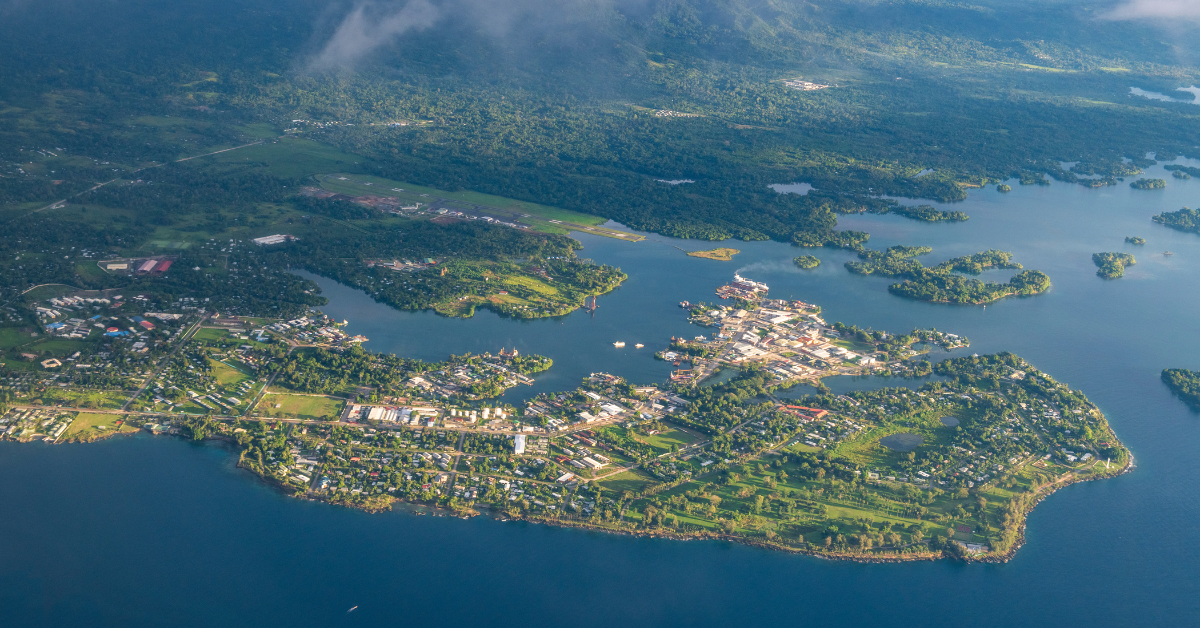The kanji representation of Papua New Guinea is “巴布亜新几内亜.” While it does not carry a literal meaning, it leaves a unique impression. For Japanese people, Papua New Guinea is seen as a nation of untouched nature, immense cultural diversity, and mysterious charm. This article explores the origin of the kanji and the images associated with the country in Japan.
The Origin of the Kanji Representation “巴布亜新几内亜”
How the Representation Works
“巴布亜新几内亜” is the kanji transliteration of the katakana name “Papua New Guinea.” Japanese has a long tradition of using ateji (phonetic kanji usage) to represent foreign names and words. In the past, country names were frequently written this way, such as “亜米利加” (America) or “豪州” (Australia), where the sound was prioritized over meaning.
Design Value
In modern times, the value of such representations lies more in design and novelty than practicality. When used on T-shirts or posters, the characters give off a unique foreign charm and leave a lasting impression. This reflects the cultural association Japanese people have with kanji as carrying weight and formality.
The Image Japanese People Hold of Papua New Guinea
Impressions of Natural Richness
To many Japanese, Papua New Guinea is perceived as a country with untouched, abundant nature. Impressions commonly include “clear blue seas,” “dense rainforests,” and “colorful birds.” For diving enthusiasts, the country is seen as one of the world’s premier marine destinations, offering coral reefs and tropical fish that leave a lasting impression.
Diversity of Culture
Another striking feature is the immense cultural diversity. Papua New Guinea is home to over 800 languages, with each community preserving its own traditions and values. To Japanese people, this highlights the country as a mysterious and unknown world, enhancing its image as a distant and enigmatic place.
Connections Between Japan and Papua New Guinea
The table below shows the contrast between Japanese perceptions and reality.
| Field | Japanese Perception | Actual Features |
|---|---|---|
| Nature | Beautiful seas and jungles | World-class diving locations |
| Culture | Multi-ethnic, complex | Over 800 languages and unique traditions |
| Economy | Undeveloped, simple | Rich in minerals and natural gas |
| Tourism | A far, exotic land | Tours available from Japan |
| Sports | Not very active | Rugby and soccer are popular |
Sports as a Bridge Between Nations
Rugby as a National Symbol
The most popular sport in Papua New Guinea is rugby, which has become a source of national pride. International tournaments bring excitement, and the sport reflects values of strength and teamwork. In Japan, rugby has also gained popularity since the World Cup, creating opportunities for cultural connection.
Soccer and Cricket
In addition to rugby, soccer and cricket are widely played, particularly among young people. International matches and regional tournaments are held frequently. While direct sports exchanges with Japan remain limited, the potential for future connections through athletics is significant.
Tourism and the Real Papua New Guinea
Japanese visitors often describe their experiences as encounters with genuine simplicity and overwhelming nature. In cities, lively markets and diverse local dishes can be enjoyed, while villages offer traditional dances and festivals. Tourism infrastructure is still developing, but this allows travelers to witness authentic culture and nature.
| Tourism Activity | Feature |
|---|---|
| Diving | Coral reefs and tropical marine life |
| Trekking | Exploring untouched rainforests |
| Cultural Exchange | Experiencing dances and festivals |
| Market Visits | Witnessing everyday life firsthand |
Gaps Between Perception and Reality
| Perspective | Japanese Perception | Actual Situation |
|---|---|---|
| Safety | Viewed as dangerous | Varies by region; tourist areas are increasingly safe |
| Cultural Understanding | Seen as too complex | Accessible through guides and local interaction |
| Distance | Thought to be extremely far | Around 7 hours by air from Japan |
| Economic Growth | Considered underdeveloped | Growing due to resource industries |
Conclusion
The kanji representation of Papua New Guinea, “巴布亜新几内亜,” is simply a phonetic adaptation, yet it carries a strong visual impression. For Japanese people, the country is associated with natural abundance, cultural diversity, and mystery. In reality, Papua New Guinea is also a resource-rich nation with vibrant sports culture and tourism opportunities. Through tourism, culture, and sports, the perception is likely to shift from an abstract notion of an “unknown land” to a more concrete, approachable, and dynamic image.






